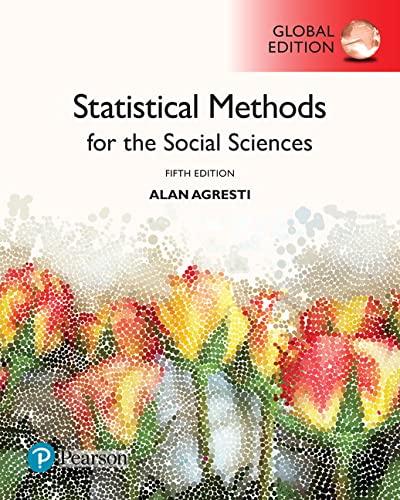14.15. Table 14.12 shows the results of fitting two models to 54 observations on y = mental...
Question:
14.15. Table 14.12 shows the results of fitting two models to 54 observations on y = mental health score, x1 = degree of social interaction, and x2 = SES. The variables x1 and x2 are measured on scales of 0–100, and larger y-scores represent better mental health. The variable symbol x1**2 represents x21
, and x1*x2 represents x1x2.
(a) When model 1 is fitted, which best describes the result over the range 0–100 of x1-values?
(i) ˆy is a bowl-shaped function of x1, first decreasing and then increasing.
(ii) ˆy is an increasing bowl-shaped function of x1.
(iii) ˆy is a mound-shaped function of x1, first increasing and then decreasing.
(iv) ˆy is an increasing mound-shaped function of x1.
(b) When model 2 is fitted, which best describes the result over the observed ranges?
(i) ˆy is a linear function of x1 with positive slope that is the same for all x2.
(ii) ˆy is a linear function of x1 with positive slope for some values of x2 and negative slope for others.
(iii) ˆy is a linear function of x1 with positive slope, but the magnitude of that slope is smaller for larger values of x2.
(iv) ˆy is a quadratic function of x1 and x2.
TABLE 14.12 Model Variable Estimate Model Variable Estimate 1. Intercept 15 2. Intercept 16 x1 0.200 x1 0.07 x1**2 –0.001 x2 0.04 x1*x2 –0.0006
Step by Step Answer:

Statistical Methods For The Social Sciences
ISBN: 9781292220314
5th Global Edition
Authors: Alan Agresti






